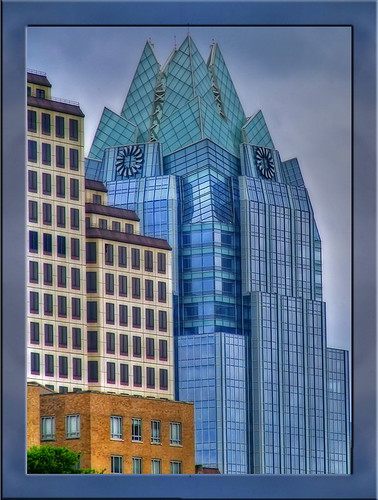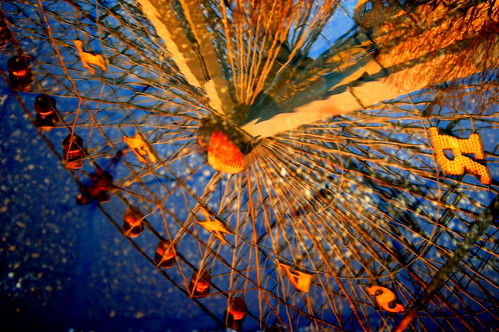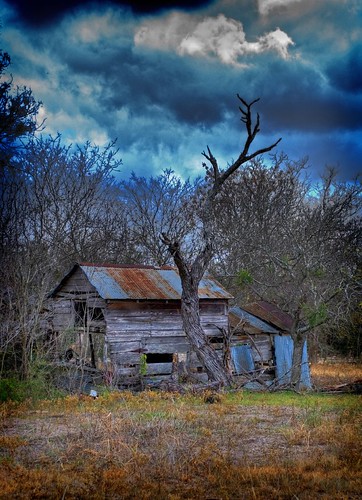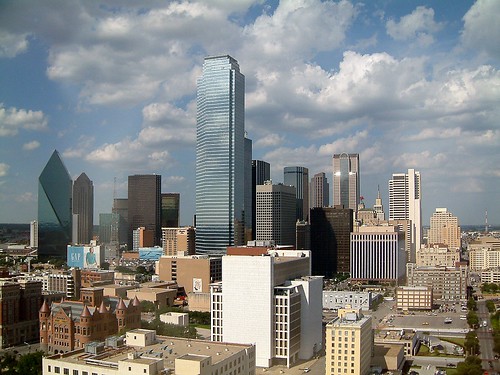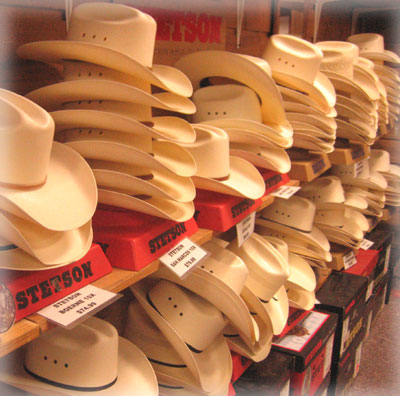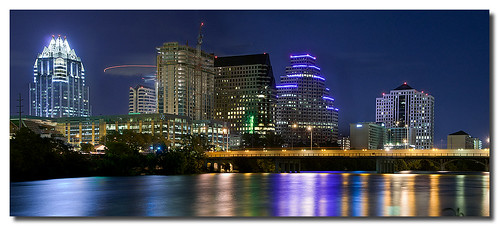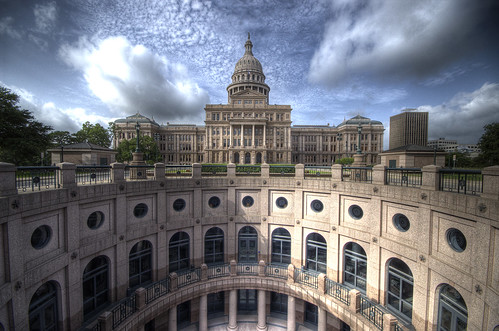
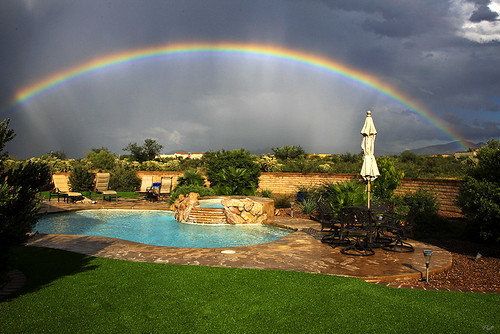


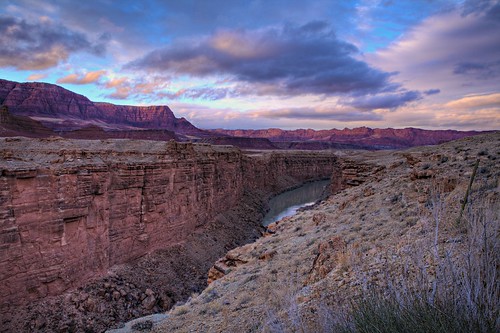


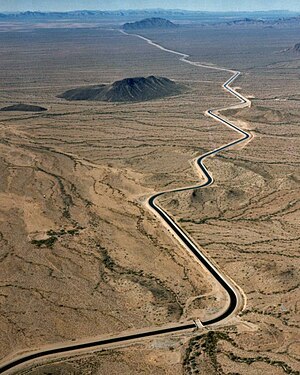

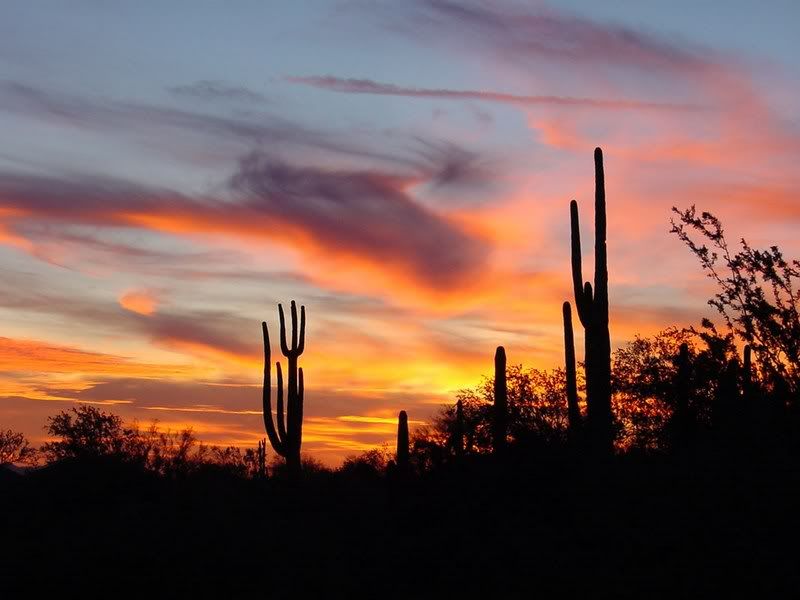

Arizona contains some of the most spectacular scenery in the whole of the USA. The Grand Canyon, the Painted Desert National Park and Petrified Forest National Park (comprising the Painted Desert in the north and Rainbow Forest in the south) are just some of the highlights.
Phoenix, the largest city in the State, shares borders with Scottsdale, the primary resort destination in Arizona. Both cities have a variety of accommodations and attractions, unique shopping, fine art galleries and many cultural events. The sixth-largest city in the USA and the capital of Arizona, Phoenix has enjoyed a growth in popularity recently, thanks to its improved airport facilities and a large investment in extensive urban redevelopment. Today, it claims to have more 5-star hotels than any other US city.
Tombstone is the site of the infamous shoot-out at the OK Corral.
Horse racing can be seen at Turf Paradise in Phoenix and Rillito Downs in Tucson. Car-racing takes place in Tucson at the Southwestern International Raceway and in Phoenix at Firebird Raceway and Phoenix International Raceway, where NASCAR races are held. Rodeos are popular in Arizona and there are over 25 major rodeo sites throughout the state. Skiing is available in the winter at The Arizona Snow Bowl near Flagstaff, Mount Lemmon (one hour outside Tucson) and Sunrise Ski Area outside Pinetop/Lakeside. Other sports available include archery, horseback riding, bowling, fishing, golf, hiking, hunting, swimming, river tubing, hang-gliding, ballooning and tennis.
Lightweight cotton clothing for all seasons, with a wrap for cool nights. Warmer clothing is needed in the mountains, especially in the ski areas.
Regional specialties:
Phoenix and Tucson have various nightclubs, and there is evening entertainment at many resorts in the area. Scottsdale’s nightlife is more concentrated, while the university crowd go out in Tempe, where there are good jazz clubs on Mill Avenue.
Grand Canyon State.
The metropolitan area, home to over 3 million residents, is the 14th-largest in the USA and offers some 174 golf courses. Founded in 1888 and having a strong Western heritage, Scottsdale has matured into a mecca for lovers of relaxed lifestyles. Year-round sunshine makes the outdoors a way of life, with scores of tennis courts, swimming pools and an ever-increasing number of spas. Attractions include a new museum of contemporary art and Taliesin West, the home and workshop of the famous architect Frank Lloyd Wright. On the western edge of Phoenix, Glendale is known for its antique shops, while in the southeast are Mesa, the third-largest city in the State, and Tempe, known for the shopping and nightlife on pedestrianized Mill Avenue.
The most common way to get there is by car from either Phoenix or Las Vegas (see the Nevada section), or to use the town of Flagstaff (tel: (800) 842 7293 or (928) 779 7611; website: www.flagstaffarizona.org), on the historic Route 66, as a base (travel time – 90 minutes). The planet Pluto was discovered at the Lowell Observatory here.
In the middle of the Navajo Reservation sits the Hopi Reservation, comprising 6475 sq km (2500 sq miles) and accommodating 7000 Hopis. They have lived in the region for 1500 years and are known for their amazing agricultural talents in farming dry and difficult land. The Hopis live in snug pueblo-style villages on top of three mesas. This area is treasured for its outstanding natural beauty.







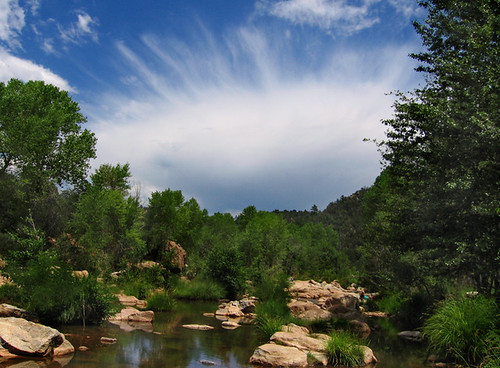




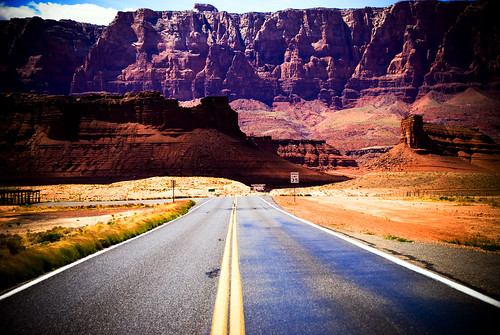


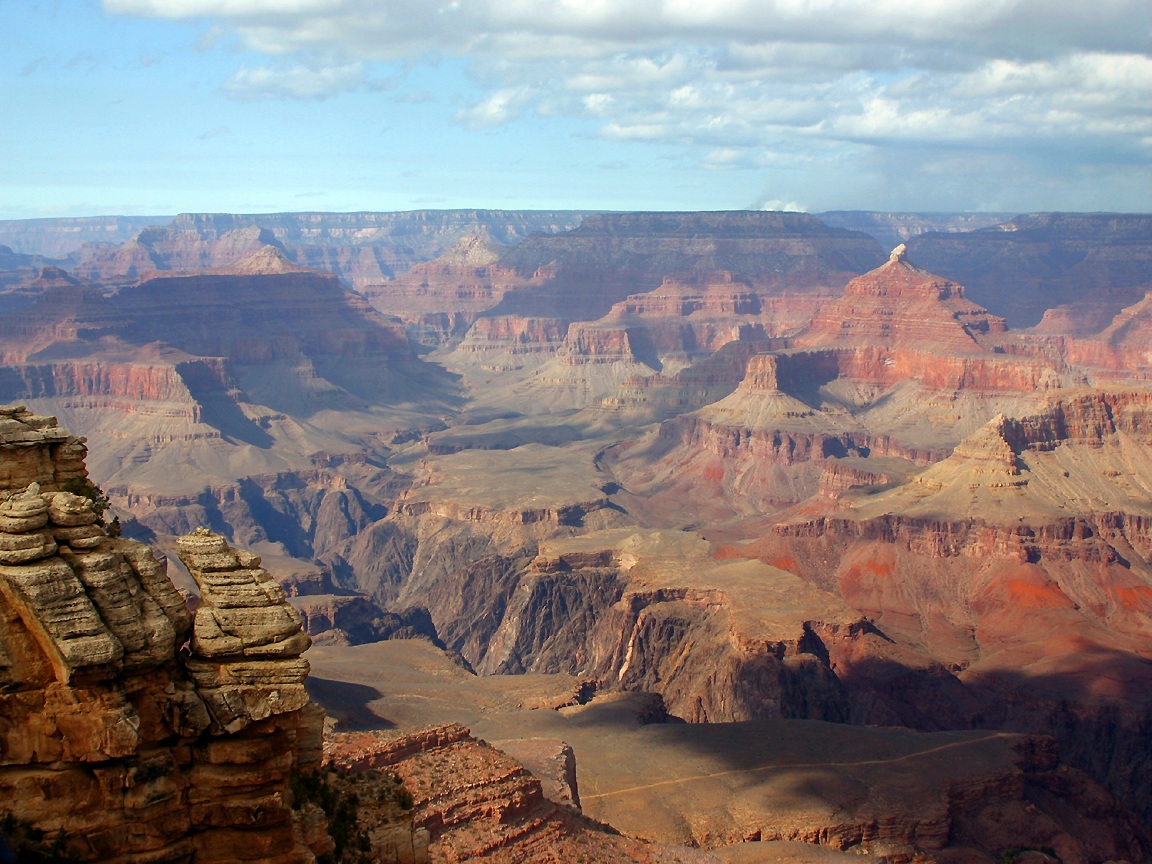




Phoenix, the largest city in the State, shares borders with Scottsdale, the primary resort destination in Arizona. Both cities have a variety of accommodations and attractions, unique shopping, fine art galleries and many cultural events. The sixth-largest city in the USA and the capital of Arizona, Phoenix has enjoyed a growth in popularity recently, thanks to its improved airport facilities and a large investment in extensive urban redevelopment. Today, it claims to have more 5-star hotels than any other US city.
Tombstone is the site of the infamous shoot-out at the OK Corral.
- Sport
Horse racing can be seen at Turf Paradise in Phoenix and Rillito Downs in Tucson. Car-racing takes place in Tucson at the Southwestern International Raceway and in Phoenix at Firebird Raceway and Phoenix International Raceway, where NASCAR races are held. Rodeos are popular in Arizona and there are over 25 major rodeo sites throughout the state. Skiing is available in the winter at The Arizona Snow Bowl near Flagstaff, Mount Lemmon (one hour outside Tucson) and Sunrise Ski Area outside Pinetop/Lakeside. Other sports available include archery, horseback riding, bowling, fishing, golf, hiking, hunting, swimming, river tubing, hang-gliding, ballooning and tennis.
- Climate
Lightweight cotton clothing for all seasons, with a wrap for cool nights. Warmer clothing is needed in the mountains, especially in the ski areas.
- Nightlife
Regional specialties:
- Salsa
- Frijoles
Phoenix and Tucson have various nightclubs, and there is evening entertainment at many resorts in the area. Scottsdale’s nightlife is more concentrated, while the university crowd go out in Tempe, where there are good jazz clubs on Mill Avenue.
- Population
- Population Density
- Capital
- Time
- Nickname
Grand Canyon State.
- Greater Phoenix Area
The metropolitan area, home to over 3 million residents, is the 14th-largest in the USA and offers some 174 golf courses. Founded in 1888 and having a strong Western heritage, Scottsdale has matured into a mecca for lovers of relaxed lifestyles. Year-round sunshine makes the outdoors a way of life, with scores of tennis courts, swimming pools and an ever-increasing number of spas. Attractions include a new museum of contemporary art and Taliesin West, the home and workshop of the famous architect Frank Lloyd Wright. On the western edge of Phoenix, Glendale is known for its antique shops, while in the southeast are Mesa, the third-largest city in the State, and Tempe, known for the shopping and nightlife on pedestrianized Mill Avenue.
- Lake Havasu City
- Sedona
- Tucson
- Yuma
- Apache Trail
- Grand Canyon
The most common way to get there is by car from either Phoenix or Las Vegas (see the Nevada section), or to use the town of Flagstaff (tel: (800) 842 7293 or (928) 779 7611; website: www.flagstaffarizona.org), on the historic Route 66, as a base (travel time – 90 minutes). The planet Pluto was discovered at the Lowell Observatory here.
- Lake Powell
- Native American Reservations
In the middle of the Navajo Reservation sits the Hopi Reservation, comprising 6475 sq km (2500 sq miles) and accommodating 7000 Hopis. They have lived in the region for 1500 years and are known for their amazing agricultural talents in farming dry and difficult land. The Hopis live in snug pueblo-style villages on top of three mesas. This area is treasured for its outstanding natural beauty.
- Tombstone




































